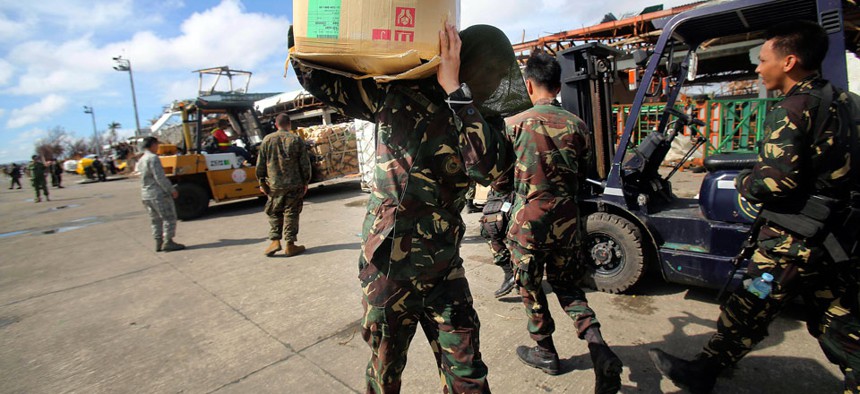Mobile Phones Are Now as Crucial as Food and Water in Emergency Aid

A Philippine soldier carries relief goods delivered in the airport in Tacloban city. Wong Maye-E/AP
The foreign assistance streaming into the Philippines includes technology to facilitate communications.
Foreign aid is streaming into the Philippines from around the world as the news of the devastation wrought Super Typhoon Haiyan spreads, but it’s no longer just food, water and shelter: Before the storm even made landfall, a team from non-profit Télécoms Sans Frontières was on the ground, carrying satellite phones and laptop-sized BGans, which enable voice calls and internet connections via satellite.
TSF set up in Tacloban, one of the areas in the storm’s path, on Nov. 7. After much of the region was flattened and telecommunications and electricity knocked out, the group started offering storm survivors free three-minute calls to loved ones—and just as crucially, offered ways for search and rescue teams to communicate with each other.
You can read more about how TSF works and what they’re doing on the ground in the Philippines in The Atlantic. The group’s rapid reaction underlines the critical role that mobile communications now play in disaster relief and humanitarian aid.


